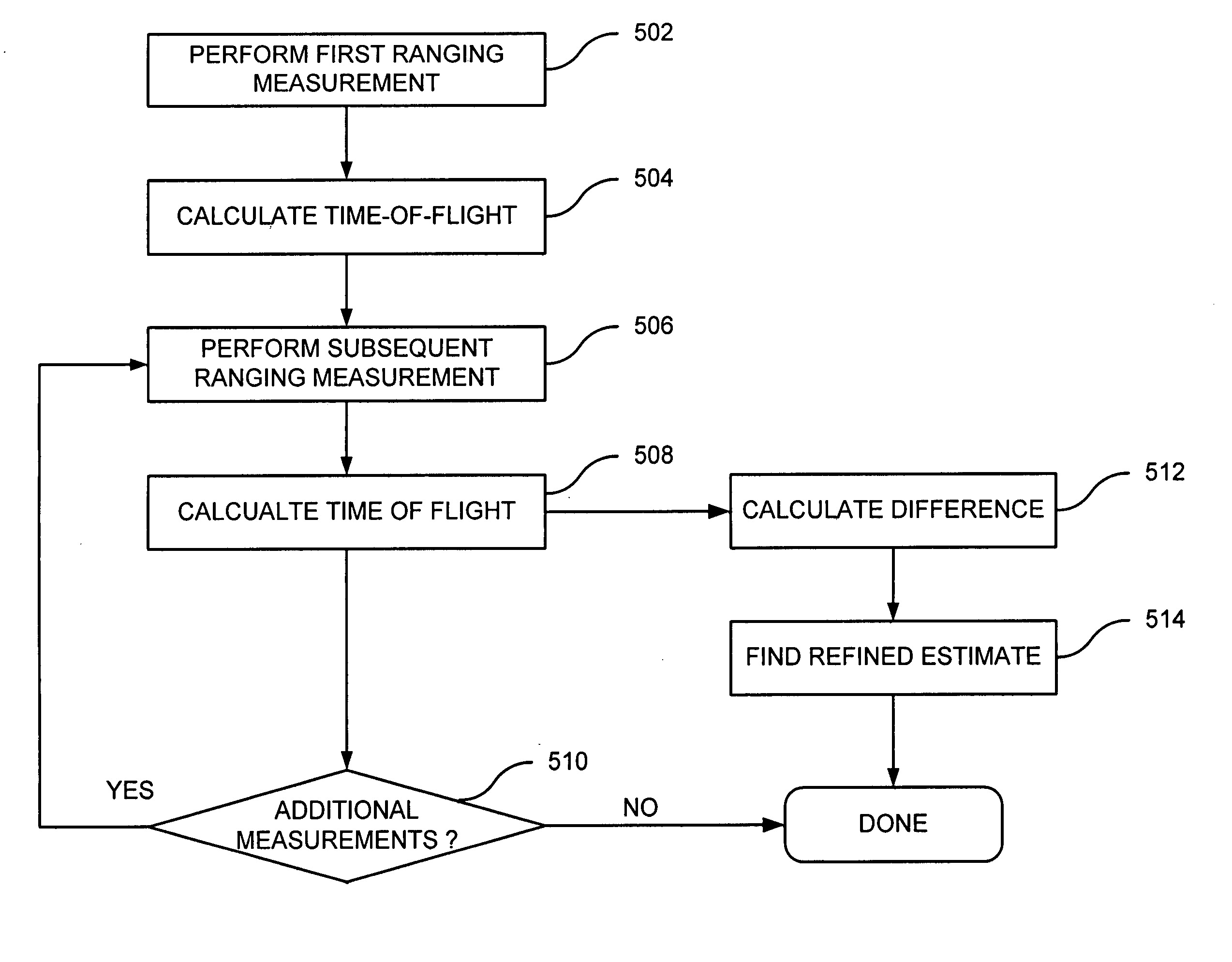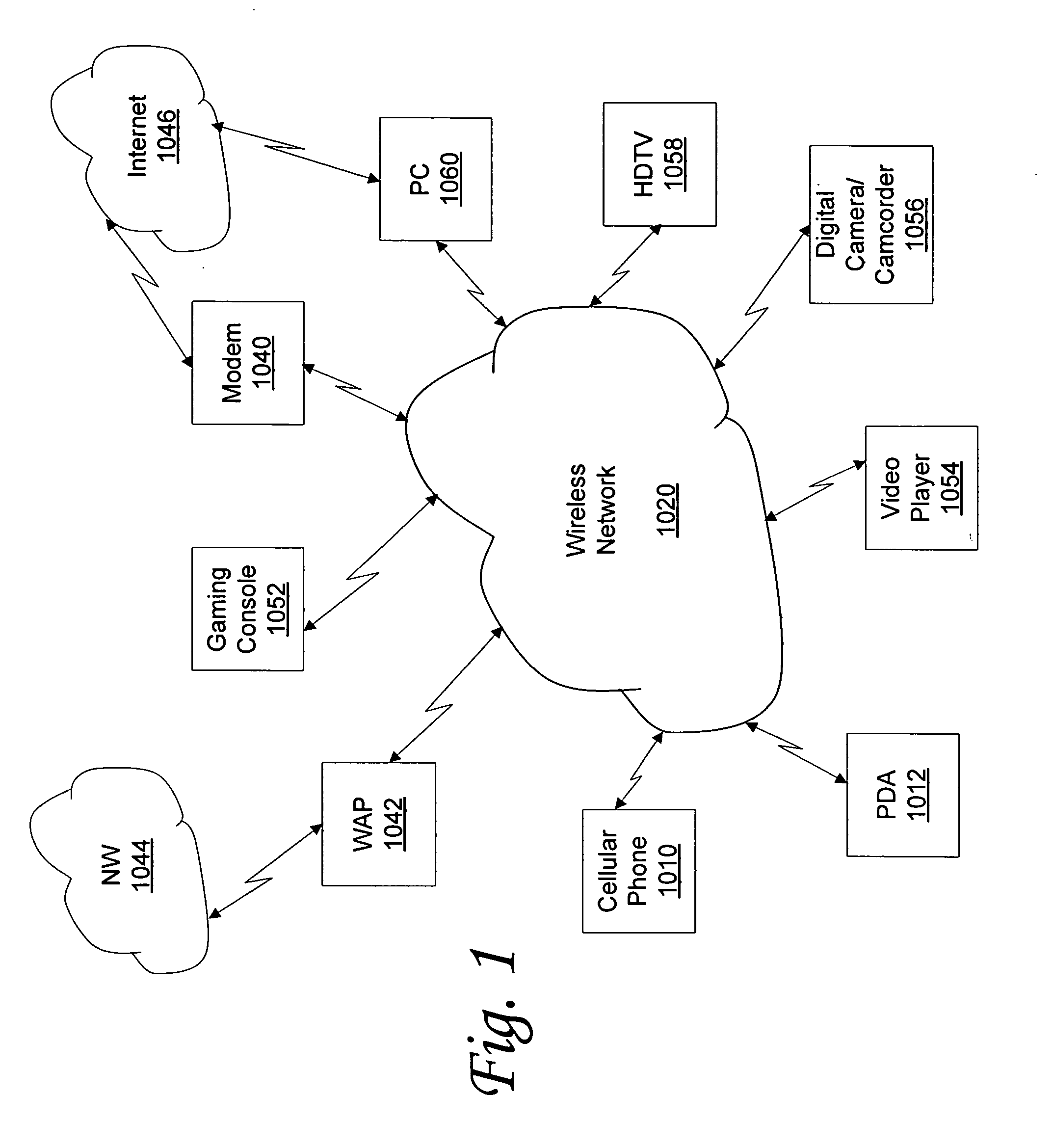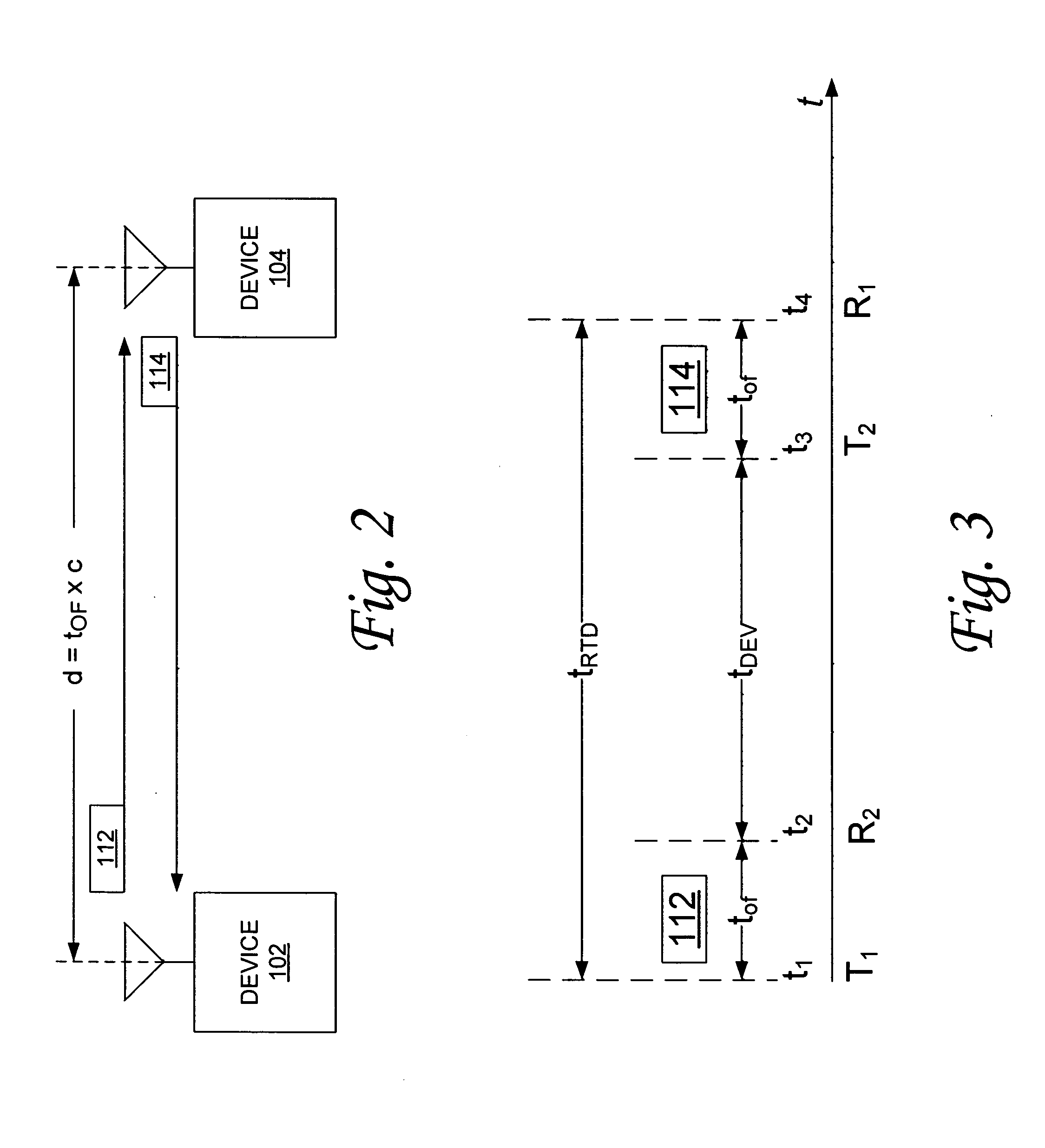Ranging system and method
a ranging system and range technology, applied in direction finders using radio waves, instruments, reradiation, etc., can solve the problems of reducing the accuracy of two-way ranging, reducing the accuracy of gps receivers, and affecting indoor coverage, so as to improve the accuracy of estimation and better account for uncertainties.
- Summary
- Abstract
- Description
- Claims
- Application Information
AI Technical Summary
Benefits of technology
Problems solved by technology
Method used
Image
Examples
Embodiment Construction
[0043] Before describing the invention in detail, it is useful to describe an example environment in which the invention can be implemented. Two-way ranging can be implemented in a number of environments and is particularly useful in wireless networks due to the difficulty of accurately synchronizing the network devices. Two-way time-of-arrival measurements can be used with asynchronous devices such as those in a wireless network. This can be accomplished by calculating the round-trip propagation delay at a single device and then dividing the result by two to yield an estimate of the one-way time of flight. The one way time of flight can be used with the propagation rate across the communication channel to determine the distance between the two devices. In this document, the terms “measurement” and “estimate” are used somewhat interchangeably. It shall be understood that the term “measurement” may, but does not necessarily, imply a certain degree precision. In fact a measurement gen...
PUM
 Login to View More
Login to View More Abstract
Description
Claims
Application Information
 Login to View More
Login to View More - R&D
- Intellectual Property
- Life Sciences
- Materials
- Tech Scout
- Unparalleled Data Quality
- Higher Quality Content
- 60% Fewer Hallucinations
Browse by: Latest US Patents, China's latest patents, Technical Efficacy Thesaurus, Application Domain, Technology Topic, Popular Technical Reports.
© 2025 PatSnap. All rights reserved.Legal|Privacy policy|Modern Slavery Act Transparency Statement|Sitemap|About US| Contact US: help@patsnap.com



